Self driving tour around Chongqing, take 2 days and 1 night to taste the key town of Rongchang, the western gateway of Chongqing
Rongchang, a small border town in Chongqing. As the westernmost city in Chongqing, it is adjacent to cities and counties such as Longchang and Luxian in Sichuan. I am fortunate to be here in Rongchang for the first time and have a deep understanding of the city's history, culture, and specialties. This western gateway city of Chongqing is so exciting. Now, let's embark on my two-day trip to Rongchang.


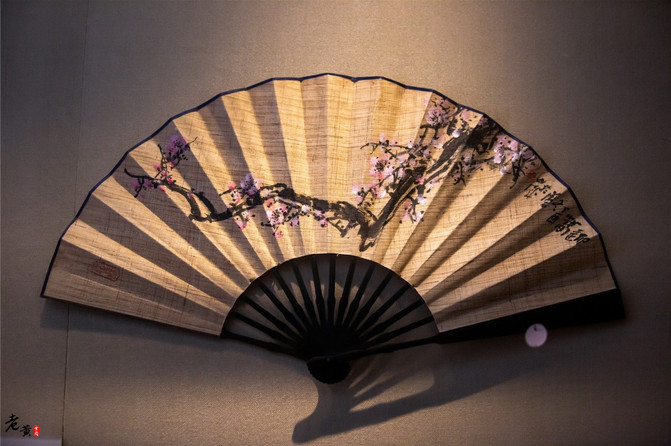
Route sharing:
Day 1: Chongqing - Rongchang Antao Town Tourist Center - Rongchang Pottery Museum - Yayu Pottery Studio - Taobao Ancient Street - Xiabu Town - Wanling Ancient Town
Day 2: Wanling Ancient Town - Gufoshan - Qingjiang Old Street - Hezhong Island - Village Farm
Rongchang'an Tao Town Tourist Center
Located in Anfu Street, Rongchang District. Speaking of Anfu, its history can be traced back to the Kangxi period of the Qing Dynasty over 300 years ago, but when it comes to Rongchang pottery, it can be traced back to the Han Dynasty. As early as that time, this was a nationally renowned pottery base, where Rongchang pottery, one of China's four famous ceramics, was produced.


Our first stop was on this legendary land. Rongchang pottery, as one of the four famous business cards of Rongchang in China, has long been well-known in the ceramic industry. As the first stop of the Antao Town Scenic Area - the Visitor Center, its design is even more impressive. Its front door is directly transformed into a must-have kimchi jar for every household, with a very "delicious" shape and a feeling of warmth. Although many people roast that they are old-fashioned and have no new ideas. But little do they know that resonating is the best, and the image of the kimchi jar has a huge impact on the people of Sichuan and Chongqing. So, as Rongchang, which is now promoting comprehensive tourism, the logo style building of Antao Town is gradually becoming the most unique tourism business card of Rongchang District and promoting it to the whole country and even the world.

In front of the gate, there is a small seal script pottery character with a floating and ancient style, perfectly combining with the original ancient charm of ceramics. From a high altitude, its grandeur is even more evident.

The main body of the tourist center is also shaped like a ceramic teapot, and the lid on the teapot opens to become the entrance of the tourist center. Express the elements of Rongchang pottery to the fullest extent. As the two most relatable images to the public in Rong Changtao's works - kimchi jars and tea sets, tourists are the first to experience the popularity of Rong Changtao. But if you think Rong Changtao's works are cheap and suitable for ordinary people's homes, then you are completely wrong. Almost all of Rong Changtao's works are of great value, why does it have such high value? Then you have to continue walking with me to the two places below.
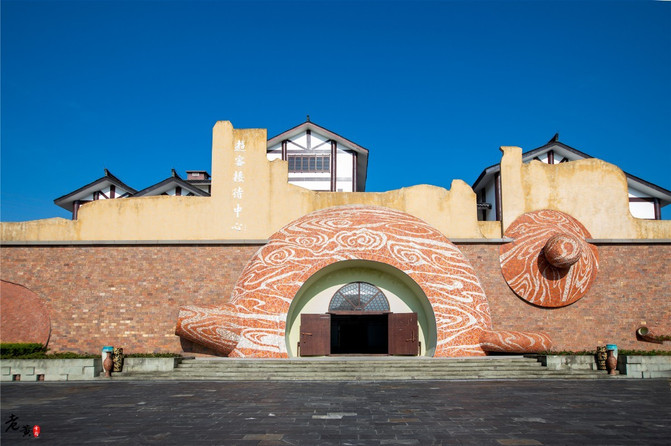


Rongchang Pottery Museum
Here is a concentrated display of the history of Rongchang pottery, from the past to the present, the development, changes, and growth process of Rongchang pottery are presented in the museum one by one. Rongchang pottery enjoys the reputation of being "as thin as paper, as red as jujube, as bright as a mirror, and as loud as a bell", and has a high reputation in the ceramic industry in China.
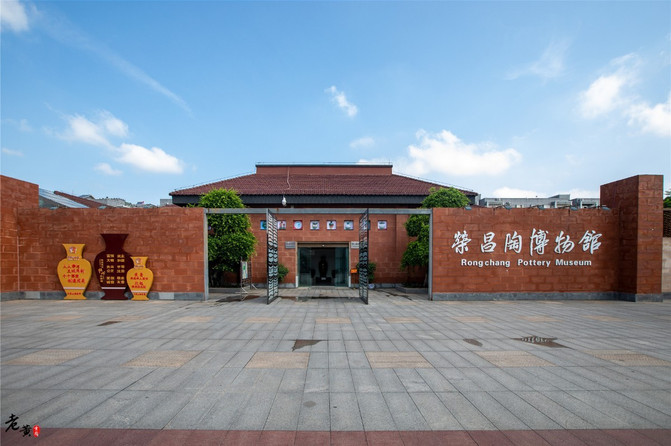
Rongchang pottery, as a representative type of pottery in the western region, possesses both the lines and elegance of northern pottery, as well as the grandeur and heavy colors of central plains pottery. It is not an exaggeration to say that Rongchang pottery is a type of pottery that combines the strengths of various families. Rongchang pottery is widely used for decoration on the roofs and walls of Buddhist temples, such as dragon and phoenix carvings on the roofs and flower carvings on the walls. These are all the shining points of Rongchangtao!



Rongchang pottery can be roughly divided into two categories, namely "coarse pottery" and "fine pottery". From the text, it is not difficult to understand that the difference between these two types is the level of precision in their workmanship. Coarse pottery is mostly used by the common people and is also the most easily accessible place for the general public. For example, jars, pots, jars, basins, bowls, etc., these are basically the "coarse pottery" in Rongchang pottery. Especially represented by flower pots, the rough and open beauty of Rongchang pottery is fully displayed. Fine pottery is mainly used in high-end places such as vases, teapots, and stationery. These things are easier to produce exquisite craftsmanship. So, in Rongchang pottery products, the price of tea sets is mostly relatively high, which is also something that ordinary people hesitate to buy!



Just talking about history is too plain, and just looking at the finished product is too monotonous. So let's get closer to the pottery making site and see the craftsmanship of contemporary craftsmen.


Yayu Pottery Studio
This studio is located across from the main entrance of Rongchang Pottery Museum. The owner is Ms. Liang, and it is reported that her father is Mr. Liang Xiancai, a national level inheritor of intangible cultural heritage. Not only are there exquisite ceramic works here, but you can also see the entire process of pottery making by the ceramic craftsmen on site. Appreciate the craftsmanship of its artisans.

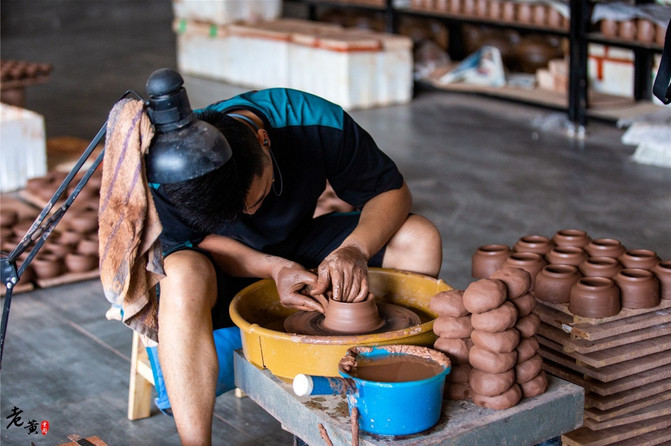

In the studio, the staff have clear division of labor and each completes their own process. There are techniques such as embryo drawing, embryo shaping, and carving. And personally, I think pulling embryos is the most eye-catching. Because a pile of soil, in the hands of these workers, combined with the rotation of the motor, can be turned into molded and stylish finished products, which is undoubtedly ingenious. In fact, this process seems simple, as if it doesn't require much effort, as long as the force is moderate and follows the turntable, it can be completed. But in reality, the difficulty is not small, it's not just about technology, but also about experience. Playing with the soil with ease is also the accumulation of time.



The main reason why Rongchang pottery is expensive is that it is entirely handmade. Because it is purely handmade, it is even more precious in the current technological era. Machines produce in batches, while manual production is unique. No second one is exactly the same, so it's worth a lot!



Taobao Ancient Street
This street is located near the tourist center of Antao Town, less than 1 kilometer away. It is reported that Taobao Ancient Street belongs to a group of renovated buildings, in order to allow tourists to experience the prosperity of the ancient Anfu Chang Five Mile Long Street and appreciate its splendor. The buildings inside are basically based on the brick and wood structures of the late Ming and Qing dynasties and the wooden structures of residential buildings in eastern Sichuan during the Republic of China period.



This Taobao Old Street is about half a kilometer long and its style is Ming and Qing architecture. People walking in the ancient streets have a sense of time travel, returning to the era of Anfu Wuli Long Street. Occasionally, I hear the sound of flowing water and see clear water flowing out of the pottery jar. This street vividly showcases the characteristics of Rongchang. Firstly, pottery. Many objects on the old street are shaped into pottery handicrafts. Next is summer cloth. There are many shops selling summer cloth on the street, allowing tourists to experience three of Rongchang's four treasures at once - ceramics, summer cloth, and folding fans. This trip is not worth it.



Xiabu Town
When it comes to the treasure of Rongchang, everyone mentions Xiabu without exception. That's right, as the "hometown of summer cloth" and "summer cloth processing base" awarded by the state, it is inevitable that summer cloth will become an indispensable element in Rongchang. Xiabu Town integrates the exhibition, research and development, information release, exhibition and sales, and experiential tourism of Xiabu. Next, we will enter the small town of Xiabu.

Xiabu, also known as hand woven hemp cloth, has a long historical background in China. Not to mention earlier, our mother-in-law and grandfather, who have been around for generations, are definitely not unfamiliar with Xiabu. Although hemp weaving is no longer mainstream at present, it does not mean the demise of summer cloth. On the contrary, with the improvement of textile technology, summer cloth has gradually expanded from its previous use as clothing to other fields of use. This also made the spread of Xiabu more widespread.

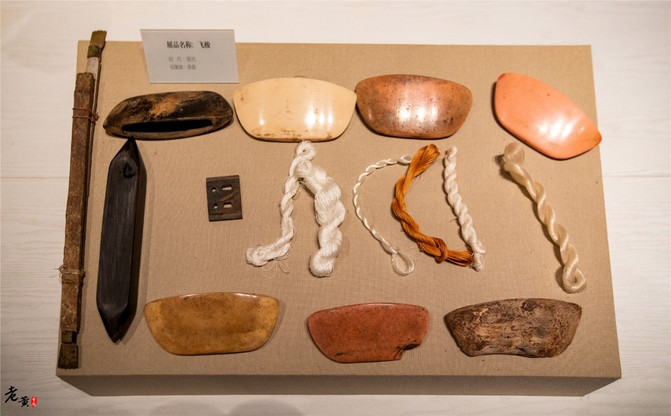
Although Xiabu has a long history and is widely known to the public. But it is still a rare thing. It is not difficult to see from its value that Xia Bu's works are very expensive and difficult for ordinary people to accept. Speaking of which, I can't help but share a little anecdote about ourselves. In fact, our understanding of summer cloth is very shallow. From the fabric, material, and tactile sensation, I don't think it is very valuable. When someone asked me with a summer cloth folding fan, I floated back and said, "100 yuan. The result, naturally, was a heavy blow to the face. A seemingly ordinary folding fan, priced at over 1000 yuan, also made me rediscover the value of Xiabu.



The main reason why Xiabu has such high value is that the process is complex and it is purely handmade. Nowadays, cotton and linen are scarce, let alone people who pay attention to ecological protection, green and natural things. In addition, cotton and linen are purely handmade and have been listed as national cultural relics. Many factors have created the "otherworldly fireworks" of Xiabu today! But no matter what, we still cannot deny Xia Bu's status and value in the martial arts world.




Wanling Ancient Town
Wanling Ancient Town is a well-known ancient town in Chongqing. Since the Southern Song Dynasty, this place has been famous for its transportation and production of honey as a tribute to the court. The water dock here was a hub for the distribution of goods, and the government's money, grain, and weapons passed through it, creating an unprecedented prosperity in Wanling (Lukong Town) at that time.


With the passage of time, Wanling Ancient Town has lost its former prosperity. However, from a certain perspective, Wanling Ancient Town has added a touch of tranquility and slow pace that ancient towns should have. As we stroll along the river and pass by the stone bridge, we occasionally see a few middle-aged women carrying baskets back and forth. This is the only way of being busy in the ancient town.



The morning sun shines on the ancient town, reflecting the stone road slowly turning red. The buying and selling on the streets have also become lively. However, compared to buying and selling, there are more town residents leisurely playing cards in tea houses. The town is not big and there are not many permanent residents, so basically everyone knows each other, which makes it more convenient for each other to become recreational partners. After 9 o'clock in the morning, the teahouse was already fully booked. Drinking tea and chatting, playing cards for entertainment, this is the lifestyle of the ancient town.


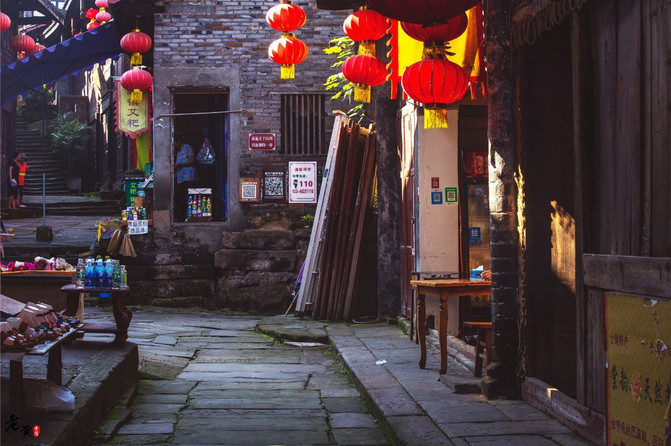
The dock of Wanling (Lukong Town) in ancient times has now been abandoned. But the flowing water here will not stop. It takes away time, leaving behind memories and deep affection.

Gufoshan Mountain
Gufo Mountain is located in Qingsheng Town, Rongchang District and is a relatively new scenic area. Rongchang's efforts to build an ecological leisure tourism area in ancient Foshan mainly depend on its geographical advantages. The mountain has abundant vegetation and is not far from the main area. It is a great place for Rongchang citizens to relax, cool off, and climb mountains.



There is a Hundred Buddha Garden on Gufo Mountain, which is an important part of the scenic area. In this area, there are 99 Buddha characters distributed on different stones. And the fonts are different, each with its own strengths. However, despite being named Hundred Buddhas, there are only 99 of them. What is the mystery behind this? Curious, I asked the staff and the answer I received was that the last Buddha remained in my heart. In fact, tourists are not too conflicted about such answers, and not many people even pay attention to details like the 99 Buddhas. But wherever there is a Buddha, there must be a pure land, perhaps in the human world or in the heart. This is the Buddhist principle that everyone needs to comprehend.
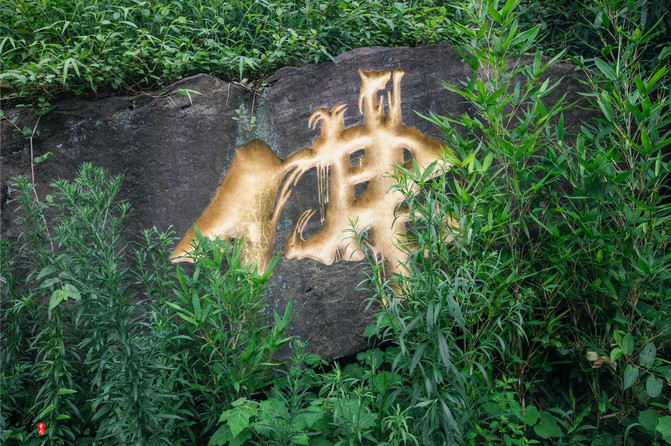



Gufo Mountain not only has such a place of Buddha nature, but also has relaxing projects. For example, the currently popular glass bridges, glass slides, and glass drifting. These three projects allow tourists to not only interact with nature in the scenic area, but also enjoy the pleasure brought by game interaction.



Climbing ancient Foshan on weekends, away from the city, allows oneself to relax both physically and mentally.


Qingjiang Town
This is a small town under Rongchang District, which specializes in sightseeing agriculture and is committed to building a demonstration garden for loquat and longan picking, and strengthening the management of loquat and longan planting. At the same time, on the basis of the original planting, expand the scale of longan planting outside the island of Hezhong, and create a thousand acre longan base. Moreover, there are many demonstration farm projects in Qingjiang Town that combine agriculture with homestays, allowing tourists to truly experience rural life.

Our first stop is Qingjiang Old Street. This street is divided into two parts, and we only walked the lower half. The geographical location of Qingjiang is adjacent to Luxian County in Sichuan Province, and the boundary between the two places is the Laixi River. Half of the river water belongs to Qingjiang Town in Rongchang, and the other half belongs to Luxian County in Sichuan Province. Walking on the bridge, you can step on Sichuan with one foot and stand on Chongqing with one foot. Because of this year's water rise, this bridge looks very low. And on the bridge, you can clearly distinguish where the boundary line is. The trick is to look at the railings on the bridge. In Chongqing, they have been painted and look relatively neat. However, in Sichuan, the railings have been in disrepair for many years and are now covered in rust stains. It is said that a new bridge will be built next to this bridge soon, and the piers have been completed. It seems that this small bridge that carries history will soon exit the historical stage and become a memory of an era.

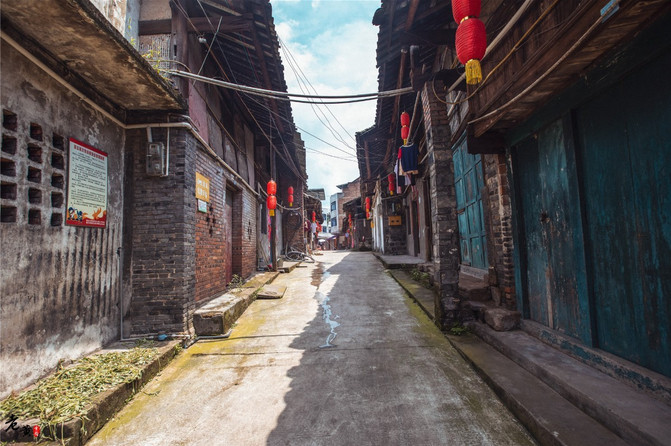

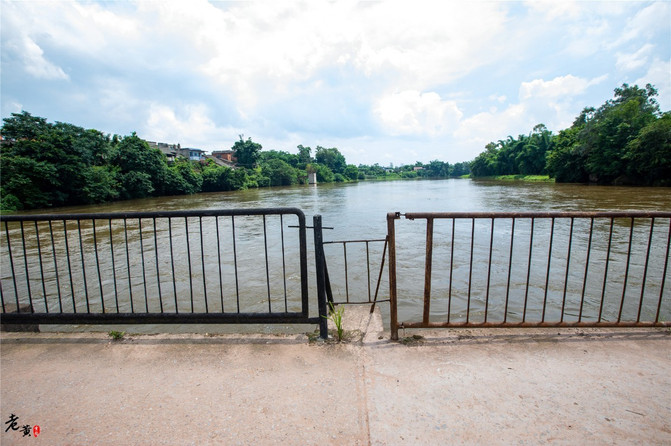

Leaving the old street, we arrived at the second stop in Qingjiang Town - Hezhong Island. From a geographical perspective, the island in the river, as its name suggests, is surrounded by water and is the only independent island on the river surface. This island has a considerable area, with a circular circumference of approximately 3.5 kilometers. The road conditions are also good. According to my observation, cars on the island travel in one direction and arrows have been planned. From these details, it can be seen that the development of Hezhong Island is relatively complete. We drove around the island and found that the environment on the island in the river was very good. Tourists can fish here and even pick during the harvest season. It is worth mentioning that there are many water orchards on the island, such as loquat orchards, longan orchards, etc. It is reported that Hezhong Island will also hold a Guiyuan picking festival during the harvest season, and the Guiyuan resources on the island are extremely abundant. Not only that, the construction of Hezhong Island also takes into account the nature of cultivation and health. A bicycle riding track is built on the island for tourists to relax and enjoy leisure time on weekends, while also exercising and immersing themselves in the countryside.
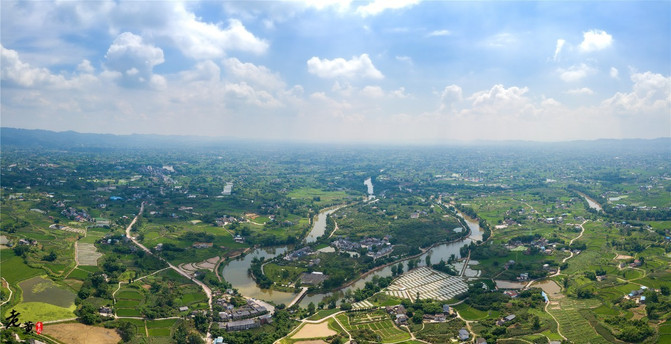




In Hezhong Island, although we have already experienced the charm of Qingjiang Town's rural construction, it is still not the most concentrated here. Finally, we arrived at the third stop in Qingjiang Town - Village Construction Farm. This is the place where the combination of rural development and homestays in the small town is most thorough. Village building and shared farm will create a new experience of "Internet plus sharing" integrating seven bases, namely, ecological agricultural product sharing, rice viewing science popularization, ecological aquatic research training, featured ecological fruit viewing, 5G smart agriculture demonstration, and leisure tourism experience. From a high altitude, the farm looks like a swimming goldfish. Combined with several flower baskets next to it, which are also fish shaped, the farm presents an "interesting" side. Every year there are fish, which is also an auspicious saying, expressing the longing for a better life!

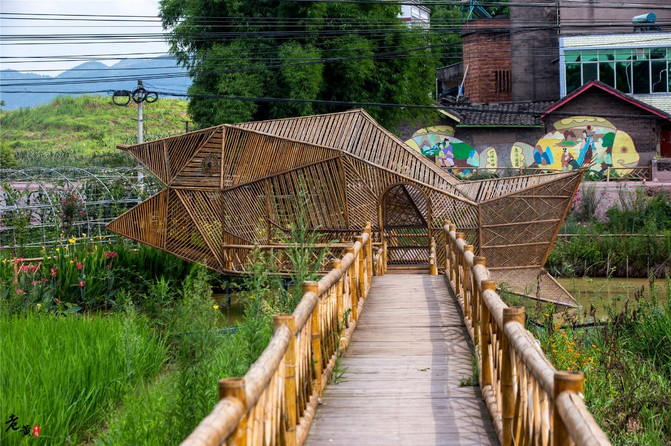

Rongchang cuisine
How can we miss out on local cuisine wherever we go? Rongchang is renowned throughout the country for its pig farming industry, and Rongchang pigs have become one of the most famous symbols of Rongchang. So when tasting delicious food in Rongchang, you can't miss out on the local pork. For example, Twice cooked pork and Braised pork belly, which are home-made dishes, use local pigs as the main ingredient. They taste different. Not only is the meat tender, but the taste of grain pigs is incomparable to that of feed pigs. So the first must try delicacy in Rongchang is the local pork.


The second is braised goose. Rongchang's braised goose. On the way from getting off the train to the core area of Rongchang city, I saw at least dozens of shops specializing in braised geese. It can be seen from this that braised geese have a high status in Rongchang cuisine. Rongchang braised goose not only has tender and smooth meat, but also has a very flavorful taste. Even if you eat it empty handed, you can undoubtedly experience the deliciousness of the braised sauce. However, this is not the entirety of the essence of braised goose. In the words of the locals, braised goose itself is not particularly stunning. The soul of braised goose lies in the dish next to it. That's right, the braised goose paired with the red oil seasoning in the dipping dish is the perfect combination of form and spirit when consumed. It is absolutely unforgettable, and filming is unparalleled.

I won't introduce all the other delicacies one by one. As long as you can grasp the two key points mentioned earlier, you have already experienced most of Rongchang cuisine. Of course, if you go to the farm and experience rural cuisine, it's also a great choice!




The 2-day and 1-night trip to Rongchang has come to an end. Two days were too rushed, and I could only catch a glimpse of Chongqing, this small western gateway city. Looking forward to another opportunity to delve deeper into Rongchang. Explore more exciting cultures and stories!
Previous Article:Green tourism: Nine major paths to promote the "new reform" of cultural and tourism consumption supply
Next Article:A two-day, three meal hotpot free tour with double flights from Xi'an to Chongqing
